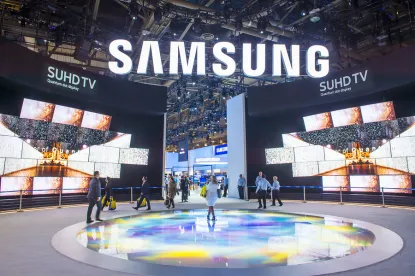In Samsung Electronics America, Inc. v. Prisua Engineering Corp., No. 2019-1169 (Fed. Cir. Feb. 4, 2020), the Federal Circuit squarely held that the Patent Trial and Appeal Board lacks the power to cancel patent claims for indefiniteness in an IPR, regardless of whether indefiniteness is raised by petitioner or on its own accord. If claims cannot be construed because they are indefinite, the PTAB should deny institution of the IPR or say so in its final written decision.
The patent challenged in Prisua Engineering, U.S. Patent 8,650,591, is entitled “Video Enabled Digital Devices for Embedding User Data in Interactive Applications.” The ’591 Patent is directed to “generating an edited video data stream from an original video stream” by “substituting at least one object . . . in said original video stream by at least a different objection.” Dr. Prieto formed Prisua to commercialize the ’591 Patent and, in 2016, sued Samsung for allegedly infringing the ’591 Patent. Prisua asserted that Samsung’s “Best Face” feature allowed phones to capture a burst of images and then replace unwanted facial images with better images.
Samsung’s IPR petition challenged claims 1-4, 8 and 11 of the ’591 patent on four grounds. In its institution decision, the Board determined to review only claim 11. The Board said that it could not determine the scope of claims 1-4 and 8. During the IPR pendency but before the Board issued a final written decision, the U.S. Supreme Court decided SAS Institute, Inc. v. Iancu, holding that when the Board institutes an IPR, it must address all claims challenged by Petitioner. As a result, the Board modified its institution decision and requested the parties to submit supplemental briefing regarding claims 1-4 and 8.
In that supplemental briefing, Samsung argued that the Board should invalidate claims 1-4, and 8 as unpatentable for indefiniteness or, in the alternative, for anticipation or obviousness in light of prior art. In its final written decision, the Board held that claim 11 was unpatenable as obvious in view of prior art grounds presented by Samsung, but held that claims 1-4, and 8 were indefinite and therefore the Board could not apply Samsung’s asserted prior art.
On appeal, the Federal Circuit rejected Samsung’s argument that the Board could cancel claims in an IPR for indefiniteness. It contrasted the statutory framework for IPRs with that for PGRs, in which claims can be challenged on any grounds including indefiniteness. The court observed that “Congress expressly limited the scope of inter partes review to a subset of grounds that can be raised under 35 U.S.C. §§102 & 103.” It went on to say that, “[a]s such, the proper course for the Board to follow, if it cannot ascertain the scope of a claim with reasonable certainty for purposes of assessing patentability, is to decline to institute the IPR or, if the indefiniteness issue affects only certain claims, to conclude that it could not reach a decision on the merits with respect to whether petitioner had established the unpatentability of those claims under sections 102 or 103.”
After reversing the Board on its indefiniteness rulings, the Federal Circuit remanded the case to the Board, instructing the Board to address Samsung’s arguments related to claims 1-4 and 8 on §§102 and 103 grounds notwithstanding an IPXL indefiniteness issue (i.e., claim covering multiple statutory classes) with respect to these claims.
The Federal Circuit’s holding in Prisua Engineering raises important strategic considerations for a party sued for infringement of patent claims arguably indefinite and anticipated or obvious. One consideration is whether seeking PGR is available and would best serve the interests of the accused infringer, because indefiniteness can be raised directly along with unpatentability under §102 and § 103, in the alternative. Another consideration is whether it would be better to raise indefiniteness issues in district court during the claim construction phase and, if possible, thereafter seek review of the claims on prior art grounds in an IPR. A further consideration is whether proceeding in the district court on all validity issues is the best course and foregoing a PTAB challenge, particularly in light of recent developments in the PTAB that favor patent owners.
In the authors’ experience, no one-size-fits-all strategy exists and, instead, the best path will depend on numerous considerations, including the venue where the litigation is pending, the judge, the art, the relative strength of the defenses, and cost considerations.





 />i
/>i
